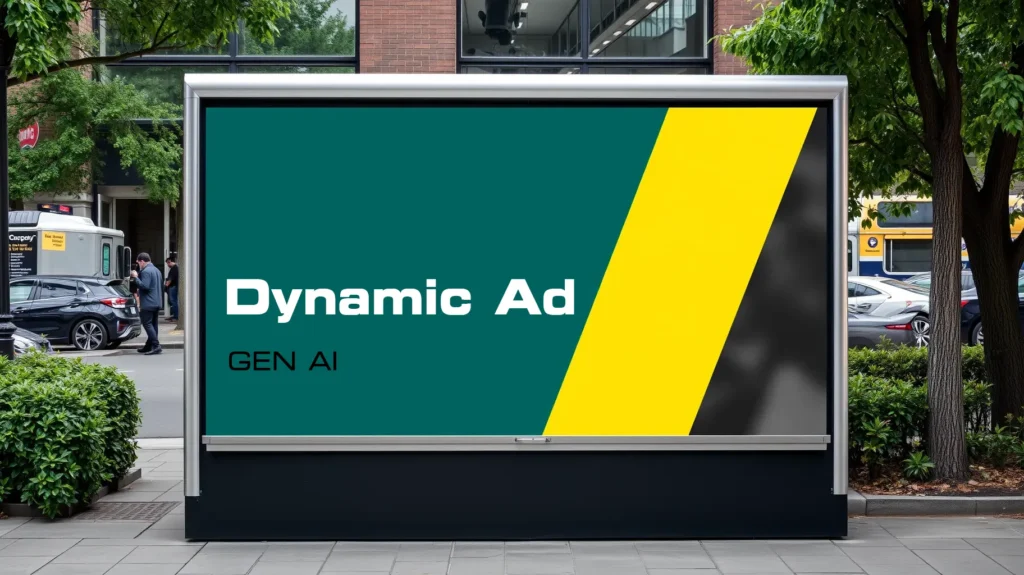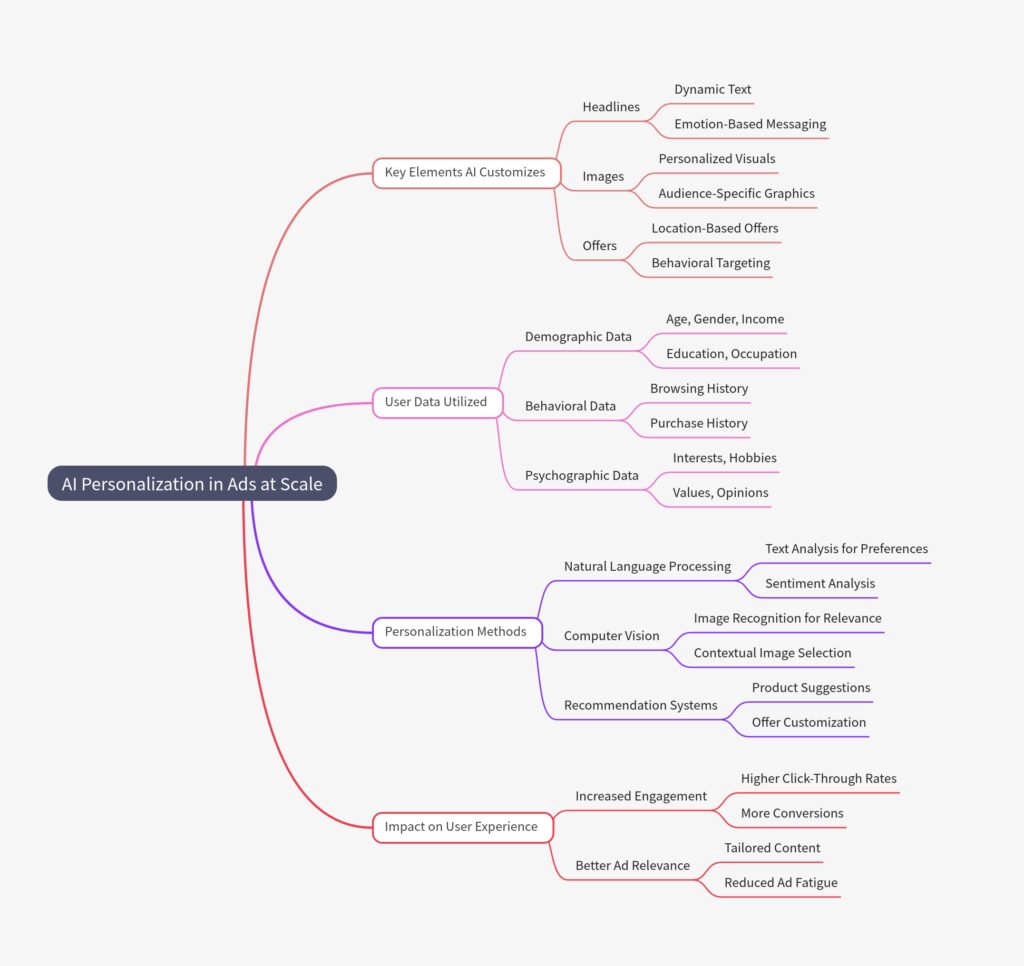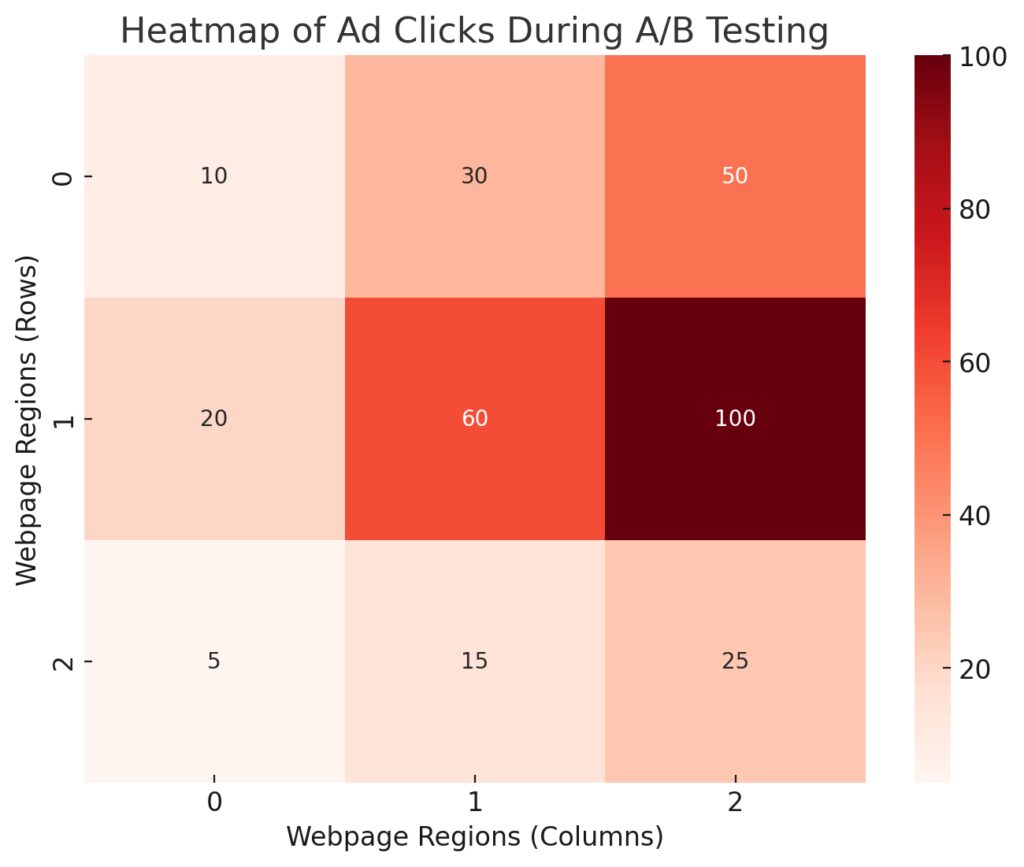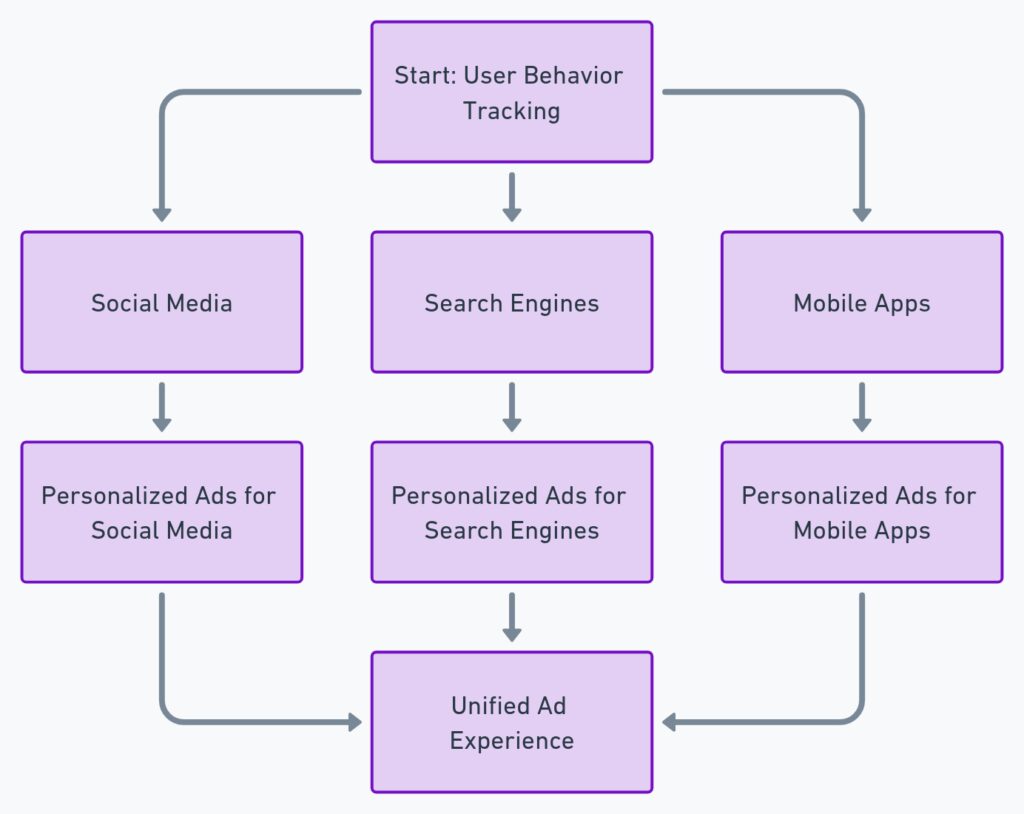
Revolutionizing Advertising with Generative AI
Generative AI is quickly becoming a game-changer. Brands are no longer limited to static, pre-made ads
Instead, they’re tapping into AI technology to create dynamic ad campaigns that can adjust and evolve in real time. This allows marketers to craft personalized ads tailored to each user’s preferences, behaviors, and interactions.
Generative AI works by using machine learning models to analyze data and generate unique content on the fly. Whether it’s adjusting the imagery, rewriting ad copy, or changing the call-to-action, AI can optimize ads in response to what works best for each individual viewer. This level of personalization was once impossible at scale, but with AI, brands can now create custom experiences for millions of users in real-time.
This shift not only improves ad performance but also enhances user engagement. When ads feel more relevant, they’re more likely to capture attention and drive action. And that’s exactly what real-time AI-driven ads are doing.
Personalization at Scale: How AI Tailors Ads for Users
One of the biggest advantages of using AI-generated ads is the ability to create hyper-personalized content on a massive scale. Traditional advertising often uses a “one-size-fits-all” approach, where every user sees the same message. However, generative AI can tweak ads based on user data such as browsing history, interests, or even current location.
For instance, let’s say someone is browsing online for running shoes. An AI-powered dynamic ad might automatically generate a personalized promotion featuring the specific brand of shoes they’ve been eyeing. It might also include a discount or special offer based on the user’s past shopping habits, encouraging them to make a purchase.
This type of real-time customization dramatically increases conversion rates because it speaks directly to the user’s needs.

By analyzing big data and user behavior, generative AI can continuously learn and adapt, creating ads that feel more human, relevant, and timely. This means that no two users have the exact same experience, making each interaction feel more personal.
Faster, Smarter Campaign Optimization
With generative AI, campaign optimization is faster and more efficient than ever before. Instead of waiting for weeks to gather data and adjust ad strategies manually, AI-powered platforms can test and optimize ads in real-time. AI can automatically run A/B tests, adjust targeting, and refine content based on performance metrics—all without human intervention.
This ability to instantly adapt ads helps brands stay ahead in fast-paced markets. For example, if an ad isn’t resonating with a particular audience, AI can generate new creative elements to test, such as different visuals or headlines. As a result, marketing teams can focus on strategy while the AI handles the heavy lifting of constant optimization.

Marketers can also fine-tune their budgets with AI. By analyzing data like click-through rates and conversions, AI algorithms can allocate ad spend more efficiently, making sure that resources are directed toward the highest-performing ads.
The Role of AI in Multi-Channel Campaigns
Today’s consumers interact with brands across multiple platforms—social media, websites, apps, and more. To create cohesive campaigns across these channels, generative AI plays a crucial role. AI can generate ads that are consistent in messaging but tailored to each platform’s unique audience and format requirements.
For example, the AI might create a high-quality video ad for Instagram while generating a more text-based, targeted ad for Google search. By doing so, it ensures that each ad is optimized for the platform, increasing the likelihood of engagement. This multi-channel approach is vital for brands that want to build a unified but flexible advertising strategy.

Moreover, AI can track user behavior across different platforms, allowing brands to deliver more consistent and relevant ads at the right time. It also provides invaluable insights into how users engage with content, offering a holistic view of the customer journey from one platform to the next.
Creativity Meets Efficiency: AI and Human Collaboration
While generative AI can do incredible things on its own, it works best when combined with human creativity. AI can handle the data-driven aspects of ad creation, but marketers and designers still play an essential role in defining the brand’s voice, tone, and overall creative vision.
For example, marketers can feed AI models with specific guidelines, ensuring that the generated ads align with the brand’s identity. They can also use AI as a brainstorming tool, exploring various ad iterations generated by the AI before deciding on the final version. This synergy between AI and human creativity enables marketers to produce ads faster and at a higher quality.
Generative AI also frees up time for creative teams to focus on strategic initiatives, like building long-term campaigns or experimenting with new ideas, rather than spending hours on repetitive tasks.

How Generative AI Enhances User Engagement
Generative AI has the unique ability to create engaging, highly relevant ads in real time. By analyzing user data such as past purchases, browsing habits, and even location, AI can tailor content that speaks directly to the individual’s interests. This level of personalization makes ads more meaningful and less intrusive, leading to higher engagement rates.
When users feel like an ad is speaking directly to them, they’re more likely to click on it. For example, an AI-powered ad might showcase a personalized discount or offer recommendations based on a user’s recent activity. The more relevant an ad is, the more it resonates with the user, and this is where AI excels. By continuously learning from user interactions, AI systems can refine future ads to further improve engagement over time.
The result? Higher click-through rates (CTR), better conversion rates, and overall stronger performance for ad campaigns. This personalized approach allows brands to build stronger connections with their audiences, resulting in higher customer satisfaction and loyalty.
The Impact of AI on Ad Spend Efficiency
One of the biggest advantages of using generative AI in advertising is its ability to optimize ad spend. Traditional advertising often involves a lot of guesswork, with marketers having to manually adjust their budgets based on performance. AI takes this burden away by automatically analyzing performance data and reallocating resources to the best-performing ads.
For instance, AI algorithms can quickly identify underperforming ads and pause them, reallocating that budget to more effective ads. Similarly, AI can increase investment in ads that show high engagement or conversions, ensuring that no money is wasted on campaigns that aren’t delivering results. This kind of automated optimization leads to cost-effective campaigns, where every dollar is spent more wisely.
Marketers can also use AI to predict trends and allocate budget ahead of time, capitalizing on potential opportunities before competitors. With real-time insights, businesses can stay agile, adjusting their strategies as market conditions change.
AI-Driven Ads: Ensuring Privacy and Data Protection
While the benefits of AI-generated ads are clear, they raise important questions about privacy and data protection. In order to create highly personalized ads, generative AI relies on collecting and analyzing vast amounts of user data. This naturally sparks concerns about how that data is used, stored, and protected.
To address these concerns, brands need to prioritize data privacy and ensure that AI systems comply with regulations like GDPR or the California Consumer Privacy Act (CCPA). It’s essential to be transparent with users about how their data is being used in advertising and offer them options to opt out if desired. Moreover, AI systems must be designed with privacy in mind, minimizing the amount of personally identifiable information (PII) used for targeting.
There are also growing discussions around the ethical use of AI in advertising. As AI-generated ads become more personalized, brands need to strike a balance between personalization and user consent, ensuring that ads remain relevant without feeling invasive.
Generative AI Tools Leading the Way in Advertising
Several powerful generative AI tools are revolutionizing the advertising industry, enabling brands to create dynamic and personalized ads at scale. Tools like Jasper AI and AdCreative.ai are making it easier for marketers to generate ad copy, graphics, and layouts instantly based on input data.
These platforms use machine learning to analyze past campaign performance and suggest ad variations that are more likely to succeed. Some, like Albert AI, go a step further by autonomously managing entire ad campaigns across different platforms, optimizing budget, targeting, and creative assets in real-time.
With these tools, businesses no longer need massive design teams or months of testing to create an effective campaign. Generative AI allows them to quickly adapt to changing trends and consumer behaviors, ensuring their ads remain fresh, relevant, and engaging.
The Future of Dynamic Ad Campaigns with AI
The future of AI-driven ad campaigns looks incredibly bright, with new advancements pushing the boundaries of what’s possible. As AI continues to improve, we’ll see even more sophisticated algorithms capable of creating fully autonomous ad strategies that adapt to each consumer’s preferences in real time.
Emerging trends include predictive advertising, where AI not only reacts to user behavior but also anticipates future needs and interests. This could mean ads tailored to a user’s upcoming life events, such as purchasing a home or planning a vacation.
We’re also likely to see more immersive AI-powered ads in the metaverse and virtual reality (VR) environments. As these spaces grow, brands will use AI to create dynamic, interactive ads that users can engage with in entirely new ways, bringing personalization to a whole new level.
AI will continue to blur the lines between creativity and automation, allowing brands to deliver more human-like, personalized, and effective ads than ever before. The era of static, one-size-fits-all advertising is coming to an end, and dynamic AI campaigns are leading the charge into the future of digital marketing.
FAQs
How does generative AI improve ad performance?
Generative AI enhances ad performance by personalizing content for each user. It continuously analyzes user interactions and adjusts the ad’s messaging, imagery, and targeting based on what resonates best. This real-time optimization leads to higher click-through rates, conversions, and more efficient use of ad budgets.
Can AI handle multi-channel campaigns?
Yes, generative AI is highly effective in managing multi-channel campaigns. It adapts ad content for different platforms, such as social media, websites, and search engines, ensuring that each message is optimized for the specific audience and format. AI can also track user behavior across channels to deliver a more cohesive advertising experience.
How does AI optimize ad spend?
AI optimizes ad spend by automatically analyzing performance data and reallocating budgets to the best-performing ads. It pauses ineffective campaigns and directs resources to those with higher engagement or conversion rates. This ensures that marketing dollars are used efficiently, maximizing ROI.
Is data privacy a concern with AI-driven ads?
Yes, data privacy is a significant concern with AI-driven ads. Since generative AI relies on user data to create personalized ads, it’s essential for companies to comply with privacy laws like GDPR and CCPA. Brands must be transparent about how they use data, prioritize user consent, and ensure that AI systems handle personal information responsibly.
What tools are leading in generative AI advertising?
Popular tools like Jasper AI, AdCreative.ai, and Albert AI are at the forefront of generative AI in advertising. These platforms help marketers generate ad copy, design visuals, and manage campaigns autonomously. They leverage machine learning to optimize ad strategies based on past performance, improving both creativity and efficiency.
Will AI replace human creativity in advertising?
While AI can handle many aspects of ad creation, it won’t replace human creativity. AI is best used as a tool to enhance and speed up creative processes, such as generating ideas or testing variations. Human input is still crucial for defining a brand’s voice, tone, and overall vision, ensuring that AI-generated ads align with the brand’s identity.
How does AI predict user behavior in ads?
Generative AI uses machine learning algorithms to analyze patterns in user behavior, such as browsing history, past purchases, and social media activity. This data helps AI systems predict future interests and preferences, allowing ads to anticipate and respond to user needs even before they’re fully expressed.
What is the future of dynamic ad campaigns?
The future of dynamic ad campaigns lies in further advancements in AI. We can expect more predictive advertising, where AI anticipates user needs, and more immersive experiences through AI-powered ads in virtual and augmented reality spaces. AI will continue to refine ad personalization, making campaigns more engaging, targeted, and effective across platforms.
How do dynamic ads differ from traditional ads?
Dynamic ads created by AI differ from traditional ads in that they adjust in real-time to each user’s behavior and preferences. Traditional ads are static, offering the same message to every viewer, whereas dynamic ads use data to create personalized, evolving experiences tailored to individual users, driving higher engagement.
How quickly can generative AI create ads?
Generative AI can create ads almost instantly, as it’s designed to produce content in real-time. By leveraging machine learning models and vast datasets, AI can generate visuals, ad copy, and variations within seconds, allowing marketers to launch or update campaigns much faster than traditional methods.
Can small businesses benefit from generative AI in advertising?
Absolutely. Small businesses can benefit greatly from generative AI, as it allows them to create personalized, high-quality ads without the need for large marketing teams or budgets. AI tools like AdCreative.ai or Jasper AI can help small businesses generate effective ads, optimize campaigns, and compete with larger brands by automating much of the creative and targeting process.
Is generative AI only for digital ads?
While generative AI is most commonly used for digital advertising, its potential goes beyond online platforms. AI is also being applied to traditional media, such as print ads or outdoor billboards. For example, some billboards use AI to change their messaging dynamically based on factors like weather or local events, making them more relevant to passersby.
How does generative AI handle A/B testing?
Generative AI automates A/B testing by generating multiple versions of an ad and monitoring which versions perform better in real time. Instead of marketers manually comparing ads, AI systems automatically adjust content, headlines, and visuals to find the most effective combination. This not only speeds up the process but also delivers insights more accurately.
What industries benefit the most from AI-driven ads?
Retail, e-commerce, and finance are some of the industries that benefit most from AI-driven ads. In retail, generative AI helps create highly personalized shopping experiences, recommending products or discounts based on user preferences. In finance, AI optimizes targeting for financial services, such as credit card offers or loan applications, ensuring the ads reach the right audience at the right time.
Are AI-generated ads cost-effective?
Yes, AI-generated ads are highly cost-effective. They reduce the need for large creative teams and can quickly optimize campaigns, ensuring that ad spend is focused on what works best. AI can manage targeting, testing, and even creative generation, saving businesses time and money while delivering higher ROI.
How do AI-generated ads improve customer experience?
AI-generated ads enhance the customer experience by delivering relevant, timely content that feels personal and engaging. Since these ads are tailored to individual preferences, customers are more likely to interact with them, leading to a smoother, more enjoyable experience. The personalization creates a sense of connection between the brand and the consumer.
What are the limitations of generative AI in advertising?
While generative AI is powerful, it does have limitations. It relies on the quality of data it receives, so if the input data is biased or incomplete, the AI could generate suboptimal or biased ads. Additionally, AI cannot replace the creative intuition that humans bring to branding, storytelling, and emotional connection. AI is a tool, but human oversight is essential for maintaining brand integrity.
Can generative AI be used in video ads?
Yes, generative AI is increasingly being used in video ad creation. AI can automate the production of video ads by generating scenes, selecting visuals, and even creating voiceovers. Platforms like Pictory or Synthesia use AI to help brands create professional-looking videos quickly, with the ability to personalize content for different audiences in real-time.
What is the role of AI in predictive advertising?
In predictive advertising, AI uses data to forecast a user’s future needs or behavior, allowing brands to serve ads before the user actively searches for a product or service. By analyzing browsing patterns, purchase history, and even social media activity, AI can predict what a consumer might want next and deliver timely, targeted ads that increase the likelihood of conversion.
Resources for Learning More About Generative AI in Advertising
1. OpenAI: OpenAI is at the forefront of AI development, especially with their advanced models like GPT-4, which powers many generative AI applications in marketing and advertising. Their blog and research papers provide deep insights into the capabilities of AI and its applications across industries. Explore OpenAI’s Research and Blog
2. Google AI Blog: Google is heavily invested in AI and has integrated it into their advertising platforms. Their AI blog shares the latest developments in AI technology, machine learning, and how these advancements are transforming digital marketing. Read the Latest from Google AI
3. AdCreative.ai: A tool designed to help marketers create personalized and optimized ads with AI. AdCreative.ai leverages machine learning to generate ad creatives and automate A/B testing, making it a great platform for marketers looking to explore the use of AI in campaigns. Discover AdCreative.ai
4. The Drum: AI in Advertising The Drum is a leading resource in advertising, marketing, and media. They often cover the latest trends and how AI is influencing digital advertising. This is a great source for keeping up-to-date with industry changes. Visit The Drum for AI News
5. Jasper AI: Jasper AI is a generative AI platform widely used by content marketers and advertisers to create ad copy, blogs, and even visuals. It’s a useful tool for experimenting with AI-driven content creation. Try Jasper AI for Ad Creation
6. Marketing AI Institute: Marketing AI Institute provides in-depth articles, guides, and tools to understand the role of AI in digital marketing and advertising. They also offer an AI Academy to learn about AI-powered tools for marketing. Visit Marketing AI Institute